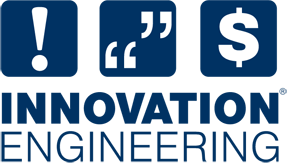I received a question about calibration by email. The question was if “there is any other way to calibrate TCAD having the SIMS measurements and CV measurements other than tedious work matching doping profiles with experimental data by tweaking parameter?”
In part, this depends on what you call tedious 🙂 A solid methodology for doing the calibration can minimize the tedious part, and improve the result. There are a few things you can do to minimize the work. Some would seem to be common sense, but I’ve seen most violated.
Before tweaking parameters:
-
- Have a clear idea of the purpose of the simulation. What question(s) are you trying to answer. Then only calibrate the portions of the simulation that are important, and only to the extent required. While the goal is always to be predictive, most of the value comes from estimating relative performance, and trends.
- Make sure the numerical aspects are correct. An example case I saw was an improper grid making the diffusion look “pregnant”, fixing the grid took care of it. Similarly make sure the simulator actually contains the required physics. Sometimes you can compensate, but it can lead to no more value than using an etch-a-sketch to produce the curve.
- Make sure the incoming simulation actually represents reality. For example, forcing an implant to fit data when the real problem is that the film thicknesses are wrong is much harder than correcting the film thicknesses, and making a smaller change to the implant if still needed.
- Similar to the previous item, understand the measurement. What was really measured? How was it measured? How accurate was the measurement? Does it truly correspond to what you simulated? An example here might be oxide thicknesses, I’ve seen people try to use oxide growth measurements on a test wafer to calibrate a measurement made in a device, without realizing that one had implant damage and the other didn’t. Are there features of the measurement technique that need to be accounted for? E.g. there are two types of SIMS, they give different results in different parts of the implant profile, and are each more accurate in different parts of the profile. Trying to force a fit in the wrong part of the SIMS can actually make things worse.
- Often it is useful to simulate the measurement itself. This can help illuminate where a measurement and model don’t really correspond.
- Is the process calibrated? Ask if your SIMS is calibrated using the NIST standards, and were the implant doses calibrated using the SIMS? One of my staff had the experience of discovering the real implant dose was 50% higher than what was in the spec because the implant itself was not calibrated. Calibration got much easier after this. For diffusion or RTP, do you know what the temperature really is?
- Understand all aspects of the process’s variability. For example, a buried layer profile that has the right shape, but is too deep or shallow, is it really the buried layer, or was the grown epi too thick or thin?
Now to tweak
- Understand the model thoroughly. Tweaking parameters until you get a fit is a lot harder than understanding how each parameter affects the simulation result, and only adjusting the proper parameter. You should also understand what the reasonable ranges are for the parameter.
- Once you have a fit, think about whether it actually makes sense. Was the parameter adjusted so far as to be physically impossible? If it was you should probably revisit the calibration, or use the result with extreme caution.
If you have the luxury of helping to define test structures, you can make the calibration much easier. Make sure your inputs go into the test chip development plan. Most of what you need will be covered by the spice extraction folks, but there are usually a few other structures needed to make your work easier.
The other pieces to think about are:
A. If available, use the simulators capability to optimize parameters to automate part of the fitting. This might be referred to as goal seeking.
B. Define one or more DOE simulator experiments to understand the variable space, and help with the fitting.

